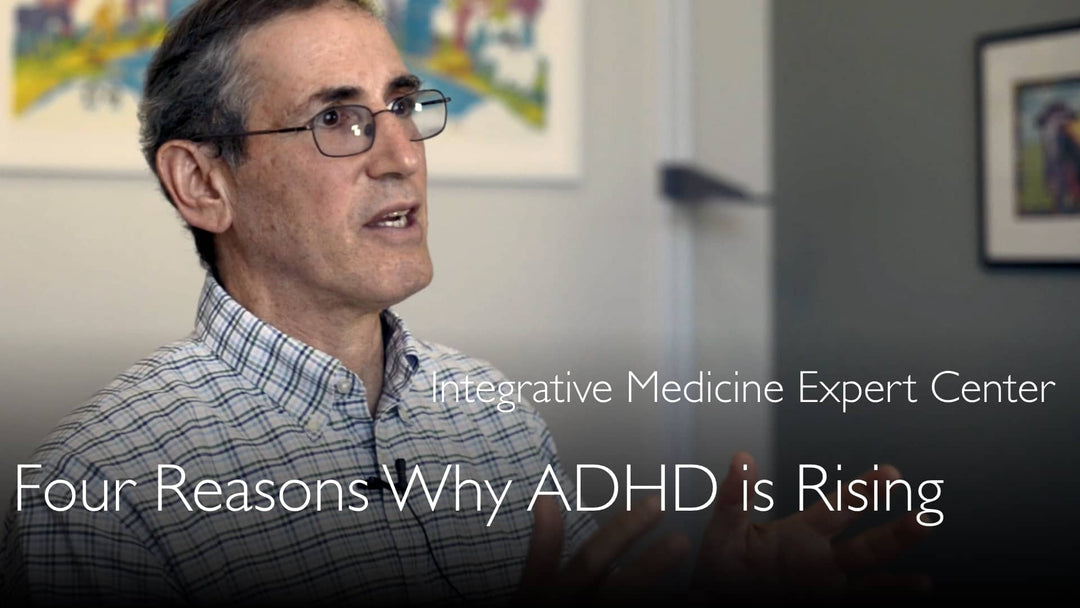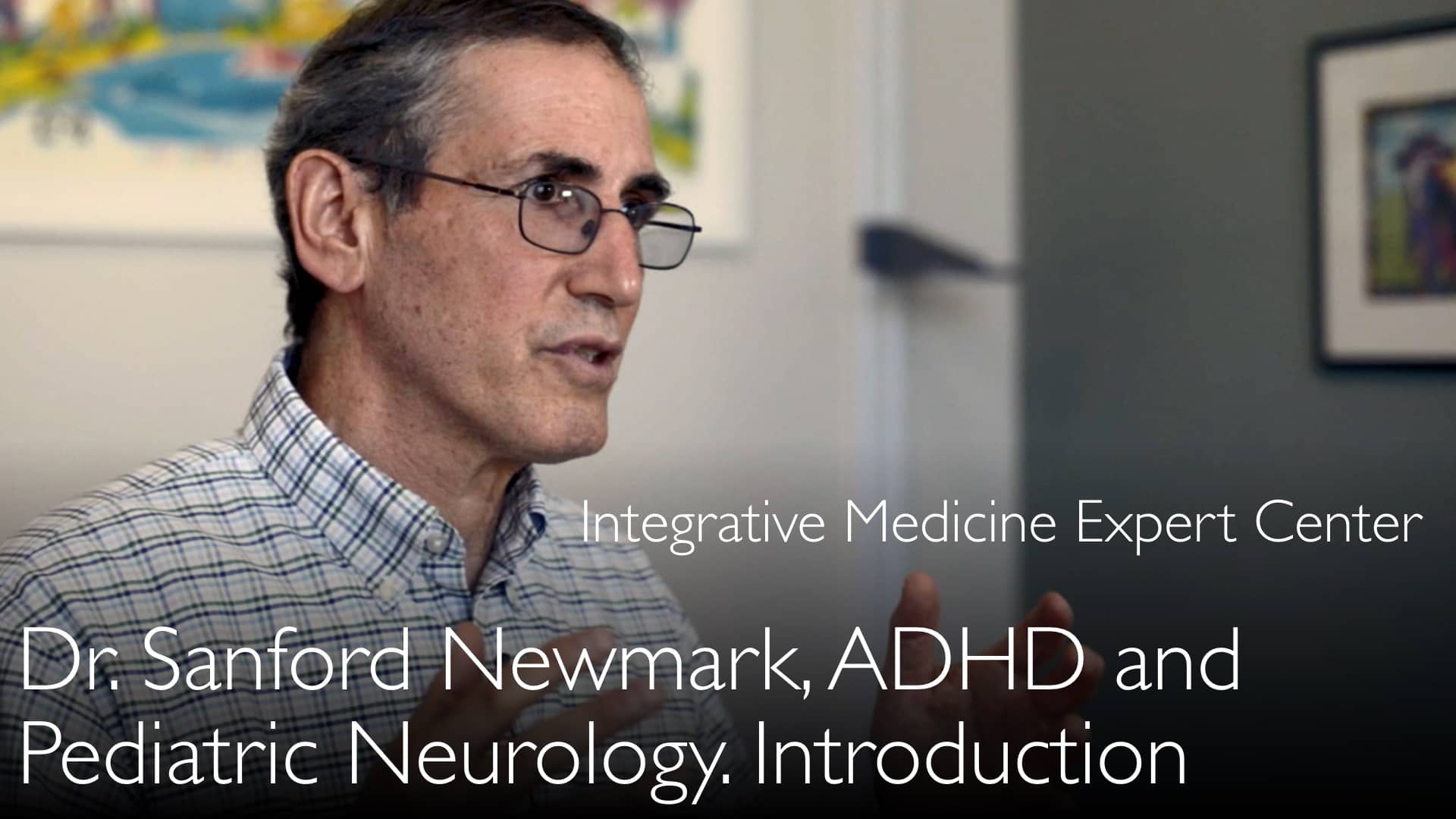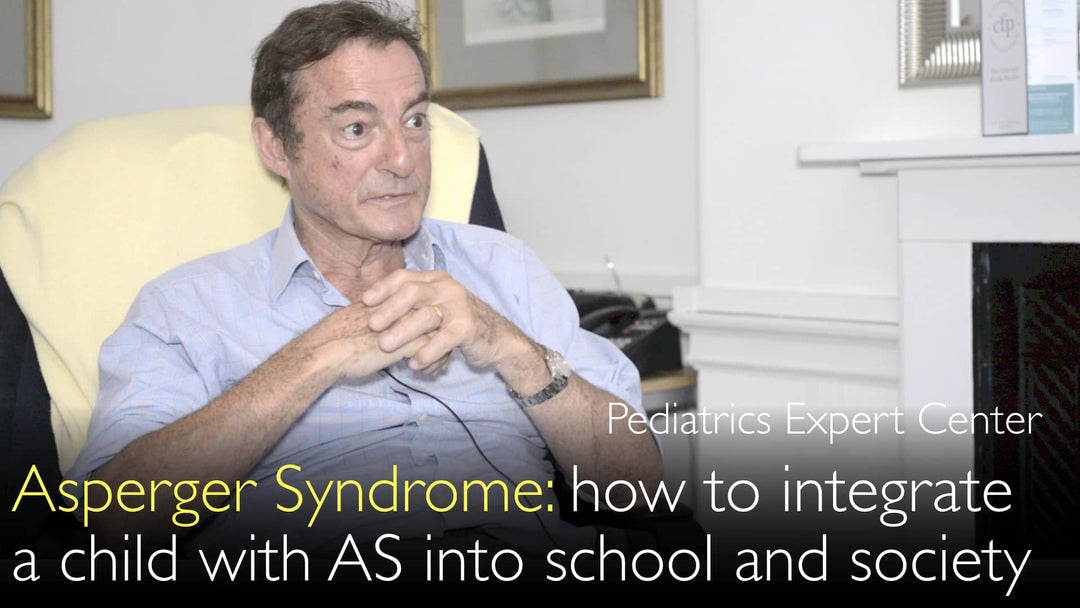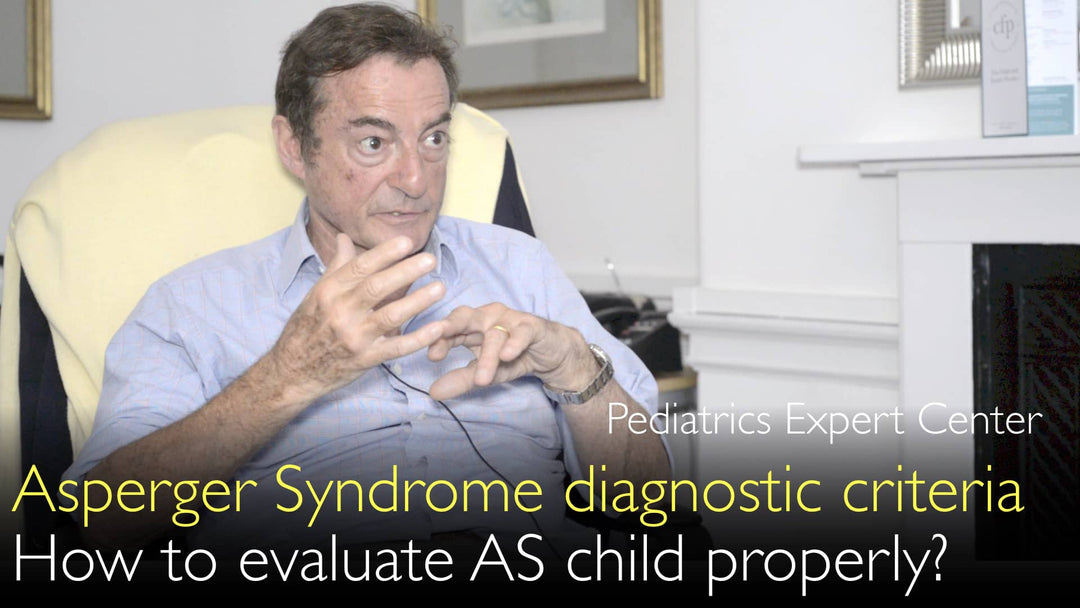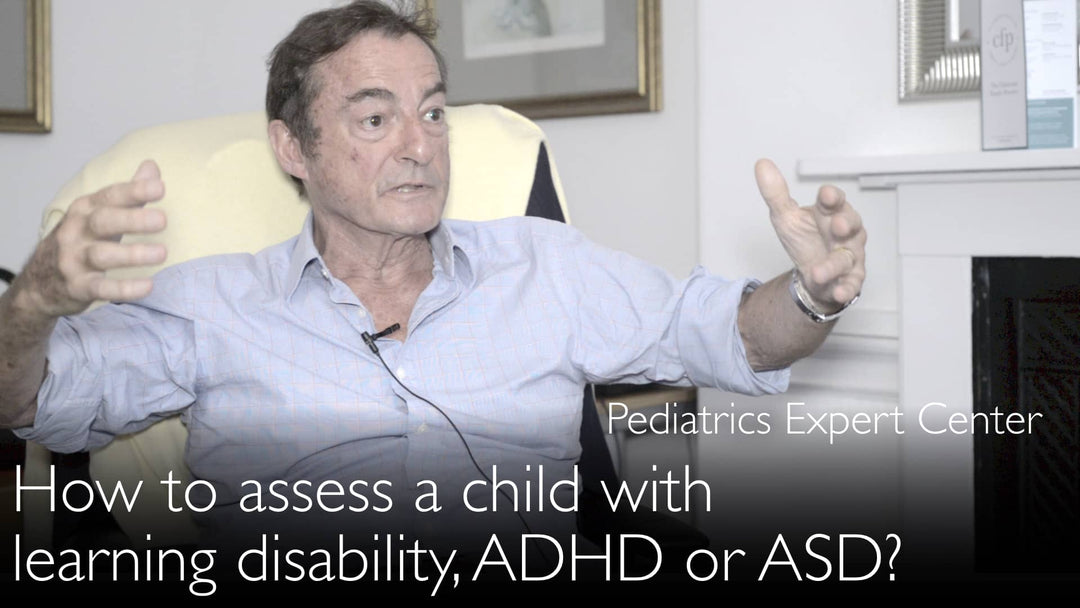מומחה מוביל בטיפול הוליסטי ב-ADHD, ד"ר סנפורד ניומרק, MD, מסביר את הגורמים המורכבים העומדים מאחורי העלייה הדרמטית באבחוני ADHD. הוא מזהה ארבע סיבות עיקריות לעלייה זו. אלה כוללות זיהוי טוב יותר של ההפרעה, הגדרה קלינית רחבה יותר, אבחון שגוי תדיר של בעיות אחרות, ועלייה אמיתית במקרים המונעת על ידי לחצים סביבתיים וחברתיים. ד"ר סנפורד ניומרק, MD, דן כיצד דרישות בית הספר המודרני ורעלנים סביבתיים תורמים לבעיה. הוא מדגיש את החשיבות של הערכה מעמיקה כדי להימנע מתיוג שגוי של ילדים.
הבנת העלייה באבחוני הפרעת קשב וריכוז: גורמים וסיכוני אבחון שגוי
קפיצה לפרק
- סטטיסטיקות אבחון הפרעת קשב וריכוז
- ארבעה גורמים לעלייה בהפרעת קשב וריכוז
- סיכוני אבחון שגוי של הפרעת קשב וריכוז
- גורמים סביבתיים בהפרעת קשב וריכוז
- לחץ לימודי ואבחון הפרעת קשב וריכוז
- טיפול הוליסטי בהפרעת קשב וריכוז
- תמליל מלא
סטטיסטיקות אבחון הפרעת קשב וריכוז
שיעורי האבחון של הפרעת קשב וריכוז (ADHD) הגיעו לרמות חסרות תקדים בארצות הברית. ד"ר סנפורד ניומרק, MD, מציין ש-11% מכלל ילדי גיל בית ספר נושאים כיום אבחנה של ADHD. המספר מדהים עוד יותר עבור בנים בחטיבת הביניים, כאשר 20% מאובחנים עם הפרעת קשב וריכוז. ד"ר אנטון טיטוב, MD, מדגיש ששני שליש מהילדים המאובחנים מטופלים בתרופות מעוררות. סטטיסטיקות אלה מדגישות דאגה בריאותית ציבורית משמעותית הדורשת הבנה מעמיקה יותר של שורשיה.
ארבעה גורמים לעלייה בהפרעת קשב וריכוז
ד"ר סנפורד ניומרק, MD, מפרט ארבע סיבות נפרדות המסבירות את העלייה באבחוני ADHD. הסיבה הראשונה היא זיהוי משופר; ילדים שתויגו בעבר כ"טיפשים" או עם "בעיות התנהגות" מזוהים כעת נכון. הגורם השני הוא הרחבה של ההגדרה הקלינית ל-ADHD. ההפרעה כוללת כעת תת-סוג של חוסר קשב, התופס ילדים שאינם היפראקטיביים אך מתקשים להתרכז. הסיבה השלישית היא שיעור גבוה של אבחון שגוי, כאשר הפרעות אחרות מחקות תסמיני ADHD. הגורם הרביעי והאחרון הוא עלייה אמיתית במספר הילדים המפתחים ADHD עקב לחצים סביבתיים וחברתיים מודרניים.
סיכוני אבחון שגוי של הפרעת קשב וריכוז
אבחון שגוי הוא גורם קריטי המנפח את סטטיסטיקות ה-ADHD. ד"ר סנפורד ניומרק, MD, מסביר שילדים רבים מקבלים אבחנה לאחר ביקור ילדים קצר של 15 עד 20 דקות. תהליך מהיר זה נכשל בשלילת הפרעות אחרות המתבטאות בתסמינים דומים. חרדה, דיכאון ומחסור כרוני בשינה יכולים כולם להתבטא כחוסר יכולת להתרכז או אימפולסיביות. ד"ר אנטון טיטוב, MD, דן בכך שאי-התאמה פשוטה בין רמת הבגרות של ילד לציפיות המורה יכולה להוביל לתיוג ADHD שגוי. זה מדגיש את הצורך בהערכה מקיפה לפני תחילת כל טיפול.
גורמים סביבתיים בהפרעת קשב וריכוז
רעלנים סביבתיים מודרניים תורמים לעלייה אמיתית במקרי ADHD. ד"ר סנפורד ניומרק, MD, מצביע על חומרי הדברה ומזהמים סביבתיים אחרים כגורמי סיכון משמעותיים. תזונה לקויה ואופיו המלחיץ של החיים המודרניים גם הם ממלאים תפקיד. גורמים אלה יכולים להשפיע ישירות על ההתפתחות העצבית של ילד, leading to increased hyperactivity, inattention, and impulsivity. As these environmental pressures intensify, more children meet the diagnostic criteria for attention deficit hyperactivity disorder, representing a true increase in prevalence.
לחץ לימודי ואבחון הפרעת קשב וריכוז
לחץ אקדמי מוגבר בחינוך המוקדם הוא מניע מרכזי לאבחון שגוי של ADHD. ד"ר ניומרק משווה בין גן ילדים היסטורי, שהתמקד במשחק, לתוכנית הלימודים של היום הדורשת מיומנויות קריאה, כתיבה ומתמטיקה. ילדים צעירים יותר בכיתה, במיוחד אלה עם ימי הולדת בקיץ, נמצאים בנחיתות חמורה. מחקר מכונן מצא שילד שנולד באוגוסט סביר פי שניים להיות מאובחן ומטופל תרופתית עבור ADHD מאשר עמית שנולד בספטמבר. זה לא נובע מהפרעה אמיתית אלא מחוסר בגרות יחסית. כאשר עבודת בית הספר הופכת לקשה פי שניים, מספר הילדים המתקשים—ולפיכך מתויגים באופן שגוי—עולה באופן טבעי.
טיפול הוליסטי בהפרעת קשב וריכוז
גישה יסודית והוליסטית חיונית לאבחון מדויק של ADHD ולטיפול יעיל. ד"ר סנפורד ניומרק, MD, תומך בהסתכלות מעבר לתסמינים שטחיים כדי לזהות גורמים שורשיים. זה כולל הערכת דפוסי השינה של הילד, תזונה, חשיפות סביבתיות פוטנציאליות ורווחה רגשית. ד"ר אנטון טיטוב, MD, תומך בחיפוש חוות דעת רפואית נוספת כדי לאשר אבחנת ADHD ולחקור את כל אפשרויות הטיפול. אסטרטגיה הוליסטית מבטיחה שילדים יקבלו את הטיפול המתאים ביותר, אשר עשוי לכלול התערבויות באורח חיים ותזונה alongside or instead of medication, leading to better long-term outcomes.
תמליל מלא
ד"ר אנטון טיטוב, MD: ישנם ארבעה גורמים לעלייה ב-ADHD בילדים. עשרים אחוז מבני חטיבת הביניים בארה"ב מאובחנים עם הפרעת קשב וריכוז. מומחה מוביל בטיפול ההוליסטי ב-ADHD דן בהפרעת קשב. מדוע האבחון ל-ADHD עלה בילדים במהלך העשורים האחרונים?
ד"ר סנפורד ניומרק, MD: רופאים מפספסים את האבחון של ADHD. אבחונים רבים ל-ADHD הם טעות. דום נשימה בשינה, אי-התאמה בין ילד למורה, ועומס לימודי יכולים להיות מאובחנים בטעות כ-ADHD.
ד"ר אנטון טיטוב, MD: מה גורם ל-ADHD בפעוטות? ארבעת הגורמים לעלייה ב-ADHD בילדים cannot be ignored by parents or doctors. גן ילדים דורש כעת מפעוטות ללמוד יותר. ילדים צעירים יותר אינם בוגרים ואינם יכולים לעבוד קשה. הם מתויגים כ"ילדים עם ADHD".
אבחונים להפרעת קשב וריכוז נמצאים בעלייה because kids and adults live in a worse environment and eat toxic food.
ד"ר סנפורד ניומרק, MD: זיהום סביבתי מגביר את הסיכון ל-ADHD. לפעמים אם הופכים את עבודת בית הספר לקשה פי שניים, מספר הילדים עם אבחון ADHD יעלה.
ד"ר אנטון טיטוב, MD: בחברה המודרנית, there is an increase in conditions affecting the mind. It is depression, anxiety, and bipolar disorder. האם ADHD הוא גם אחד המחלות המקושרות לאורח חיים מודרני, לחץ גבוה יותר, סביבה מידרדרת, ואיכות מזון יורדת?
ד"ר סנפורד ניומרק, MD: כן, הפרעת קשב קשורה לכל הדברים האלה. ADHD היה כנראה תמיד קיים בכמויות קטנות מאוד. But the stressors of our society, poor nutrition, and the environmental problems increased. They all increase the amount of children who seem to have ADHD.
ד"ר אנטון טיטוב, MD: כיום there are four million kids in the United States who have a diagnosis of ADHD. You previously posted a statistic that 11% of all school-age children have attention deficit disorder. Twenty percent of high school boys have a diagnosis of ADHD. Two-thirds of those are being treated with stimulant drugs.
ד"ר סנפורד ניומרק, MD: בדיוק!
ד"ר אנטון טיטוב, MD: What explains such dramatic growth in the diagnosis of ADHD in children?
ד"ר סנפורד ניומרק, MD: There are four possible reasons for the increase in the diagnosis of attention deficit disorder. One reason is that all these kids always had ADHD. We just missed them. Reason number two: we have widened the definition of ADHD to include more children. Reason number three: we are misdiagnosing a lot of children. Reason number four: there are more kids with ADHD. Those are the only ways we can increase the diagnosis of attention deficit disorder. It's a combination of all four reasons.
We can go into each one. So the first reason is this: thirty or forty years ago, the kids who had ADHD were just mislabeled. These kids we were mislabeling as “stupid”. They were mislabeled as having "behavior problems", as "class clowns". These kids would drop out and go do something else. It's a good thing that we are identifying them now and being able to help them in some way.
Second of all, we have widened the definition of attention deficit disorder. It used to be that only the most hyperactive kids are diagnosed with ADHD. These were the kids who would come into an office and run around. They would jump up and down. They would tear your office apart. These children with ADD could barely sit still for a second. Now most of the kids diagnosed with ADHD will sit very quietly in your office. We have the inattention subtype. This means kids can't focus but they're not hyperactive. We have really widened the definition of attention deficit hyperactivity disorder.
The third reason is this, and we can talk about this some more: we are misdiagnosing many kids with ADHD.
ד"ר אנטון טיטוב, MD: How is that?
ד"ר סנפורד ניומרק, MD: For one thing, we don't take the time to adequately evaluate these children. Many of these children are being diagnosed in a 15 or 20 minute visit with a pediatrician, or even with a child psychiatrist. These kids are just given an ADHD medication. We are missing all kinds of other things that could be causing another disease, but that other disease just looks like ADHD symptoms. For example, anxiety, depression, not enough sleep. All those can cause a behavior that looks like ADHD but it is not ADD. It could be just a mismatch between the school and a child, or a teacher and a child.
I said in many of my talks: there is a clinical trial that showed an interesting fact in the United States. If a child was born in August instead of September, this child is more than twice as likely to be treated with ADHD medications. This child is more likely to be diagnosed with ADHD.
ד"ר אנטון טיטוב, MD: Why is that?
ד"ר סנפורד ניומרק, MD: September 1st is the cutoff for getting into school. If you were born in August, you are one of the youngest kids in the class. But if you are born in September, you are one of the oldest children in a school class. Just by being a little younger, kids are being diagnosed with ADHD. They don't have ADHD; they're just a little more immature.
This is coupled with another fact. At least in the United States, we are demanding more and more of kids who go to kindergarten. When I went to kindergarten, all you had to do is eat, sleep, and play. Now you are expected to learn to read and write, and do math by the end of kindergarten. Many kids just aren't ready for that, especially the younger children. We are just misdiagnosing a lot of mildly immature kids as having ADHD. This same clinical trial was repeated in Canada and in Iceland with similar results.
This is the final reason for the increase in the diagnosis of attention deficit hyperactivity disorder: are there more kids with ADHD? Yes, there are more children with ADHD. The environment, pesticides, other environmental pollutants, poor foods, and the stress of our environment is creating children who fall into the diagnosis of ADHD.
ד"ר אנטון טיטוב, MD: Because what does a diagnosis of ADHD mean? It's some combination of hyperactivity, inability to focus, and impulsivity. Being impulsive causes problems both at home and at school. It has an impact in both those places. You can make school, kindergarten, or first grade twice as hard. Then there are going to be more kids for whom you have created a problem. As we change the environment, more children are going to fulfill the diagnostic criteria for the ADHD category.
Four causes of the rise of ADHD in children. A video interview with a top expert in holistic treatment of ADHD. Misdiagnosis, increased pollution, and harder schoolwork cause a rise in ADHD.


